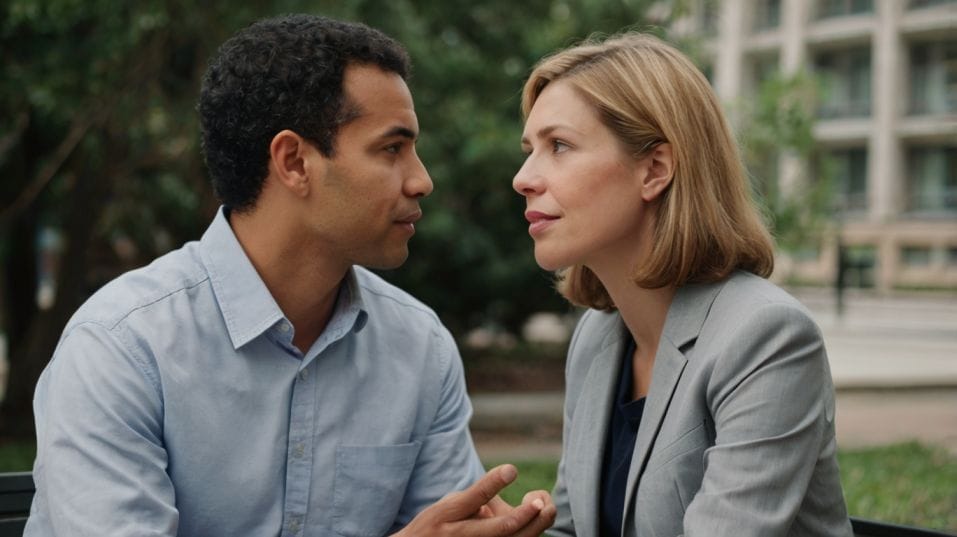Using the Mindful Pause for Smarter Conflict Resolution
Use the mindful pause to defuse conflict, respond with clarity, and stay grounded when tensions rise—backed by science and real-life strategy.

Ever walk into a tense moment at work and instantly feel your body take over—heart racing, jaw tight, words flying before you think? Those split seconds can derail an entire conversation.
But what if you could interrupt that autopilot reaction? The mindful pause is a simple yet powerful tool that lets you respond with clarity instead of instinct. It's not about staying calm—it's about staying smart when the pressure’s on.
The Power of One Beat
A pause might sound like nothing. It’s not. It’s a powerful disruptor—a split second where you shift from reaction to awareness.
You interrupt the flood of emotion long enough to ask: What’s really happening here? Not just externally, but inside you.
It’s not about suppressing emotion or pretending you’re unbothered. It’s about not letting your nervous system run the meeting. In conflict, timing is everything. That one beat gives you an edge.
The Neurobiology of Reactions
Let’s break down what’s happening under the hood when you get triggered.
When your brain perceives a threat—real or perceived—the amygdala lights up. It’s your internal security system, built to protect. But it’s also a bit primitive. It can’t tell the difference between a wild animal and a passive-aggressive email.
The moment it activates, it sends stress signals throughout your body:
- Heart rate spikes
- Breathing shortens
- Muscles tense
- Rational thought takes a backseat

That’s because your prefrontal cortex—the area in charge of emotional regulation, empathy, and decision-making—goes partially offline. This is why, in the middle of conflict, logic can feel just out of reach.
Here’s the twist: Mindful awareness reactivates the prefrontal cortex. Even just a few conscious breaths can start to restore access to higher-level thinking. You're not just calming down—you're regaining the capacity to choose a better move.
What the Research Says
This isn’t just mindfulness hype. A growing body of research backs it. A 2016 study in Mindfulness found that participants who practiced mindfulness for just 10 minutes daily became significantly less emotionally reactive.
They were better able to navigate difficult interactions, hold space for tension, and regulate their own emotions in real time.
Another study published in Frontiers in Psychology showed that mindfulness training not only reduces cortisol (a stress hormone) but also strengthens areas of the brain responsible for self-awareness and cognitive control.
The takeaway? The pause is biologically transformative. You’re not just holding your breath—you’re flipping a neural switch.
How It Plays Out in Real Life
Let’s get real: workplace conflict doesn’t happen in a vacuum. You’re juggling deadlines, performance pressure, clashing personalities, and internal politics—all in real time. No one announces, “A difficult moment is about to begin.”
It happens fast. A co-worker takes credit for your work. Your idea gets brushed off in a meeting. A client sends a snide email late at night. You’re on the spot—and your body reacts before your brain does.
That’s the moment the pause comes in.
Instead of spiraling, you catch yourself mid-surge. You breathe. You notice. You delay the reaction. Just long enough to ask: Do I want to win this moment—or manage it well?
Often, what feels like “assertiveness” in the moment is just ego in disguise. The pause helps you see that—before you send that reply.
Building the Habit (So It’s There When You Need It)
You can’t expect to summon mindfulness in a tense boardroom if you’ve never practiced it in calm moments. The pause becomes accessible under pressure when it’s familiar under low stakes.
Here’s how to integrate it into your day:
Use micro-moments. When you're waiting for your coffee, sitting in traffic, or standing in line—pause. Notice your breath. Scan your body for tension. Take 10 seconds to reset.
Tie it to routine cues. Opening your laptop, hearing a notification ping, stepping into a meeting room—these are all natural triggers. Let them remind you to pause.
Feel your body. The body is often more honest than your thoughts. Tension in your jaw? Shoulders raised? Hands clenched? That’s data. Noticing it builds self-awareness.
Practice saying less. You don’t have to fill every silence. In conversation, a pause can be disarming. It shows presence. It buys you time to choose your words carefully.
Like any muscle, this gets stronger with use. Eventually, the pause isn’t something you reach for. It’s just how you operate.
The Subtle Shift That Changes Everything
The mindful pause won’t resolve every disagreement. But it radically changes how you show up to the table.
You’ll catch yourself before saying things you regret. You’ll stop taking things so personally. You’ll sense when your story about the situation is distorting reality.
Sometimes, it’s not about being “right.” It’s about being effective. And that starts with clarity—the kind you can’t access in full-blown reactivity.
The more often you pause, the faster you see patterns:
- When your ego flares up
- When you’re assuming intent without evidence
- When you’re carrying stress from one meeting into the next
That level of self-awareness is quiet power. People feel it. It makes space for better conversations—and better decisions.
Strategic Moments to Pause
You don’t need to pause all day. You need to pause strategically. These moments offer the biggest payoff:
- Just before replying to that Slack message that feels off
- Right after receiving tough feedback—especially if it stings
- Mid-meeting, when your idea gets dismissed
- At the start of a confrontation, when emotions are high
- When your body reacts before your mouth does
These are the pivot points. Reactivity hardens the conflict. A pause keeps it human.
This Isn’t About Being “Nice”
Let’s be clear: pausing doesn’t mean you silence yourself. It doesn’t mean you roll over or avoid hard conversations. It means you choose how you engage. It means you don’t let a temporary emotion dictate a permanent response.
The pause can be bold. It can sound like: “Let’s take a breath and revisit this.” “I want to respond, but I need a minute to think.” “I’m noticing I’m getting triggered—I want to make sure I respond clearly.” That’s not softness. That’s leadership.
Final Thoughts
Reactivity is the default. The mindful pause is the upgrade.
It’s not about being calm all the time. It’s about making room for intelligence to show up when it counts. You don’t need incense or enlightenment. Just space. Just breath. Just awareness.
Start now. Catch yourself in the small moments—before a call, in traffic, while reaching for your phone. Build the habit when the stakes are low, so it’s second nature when they’re not. Next time tension flares, don’t react. Pause. Then lead.




